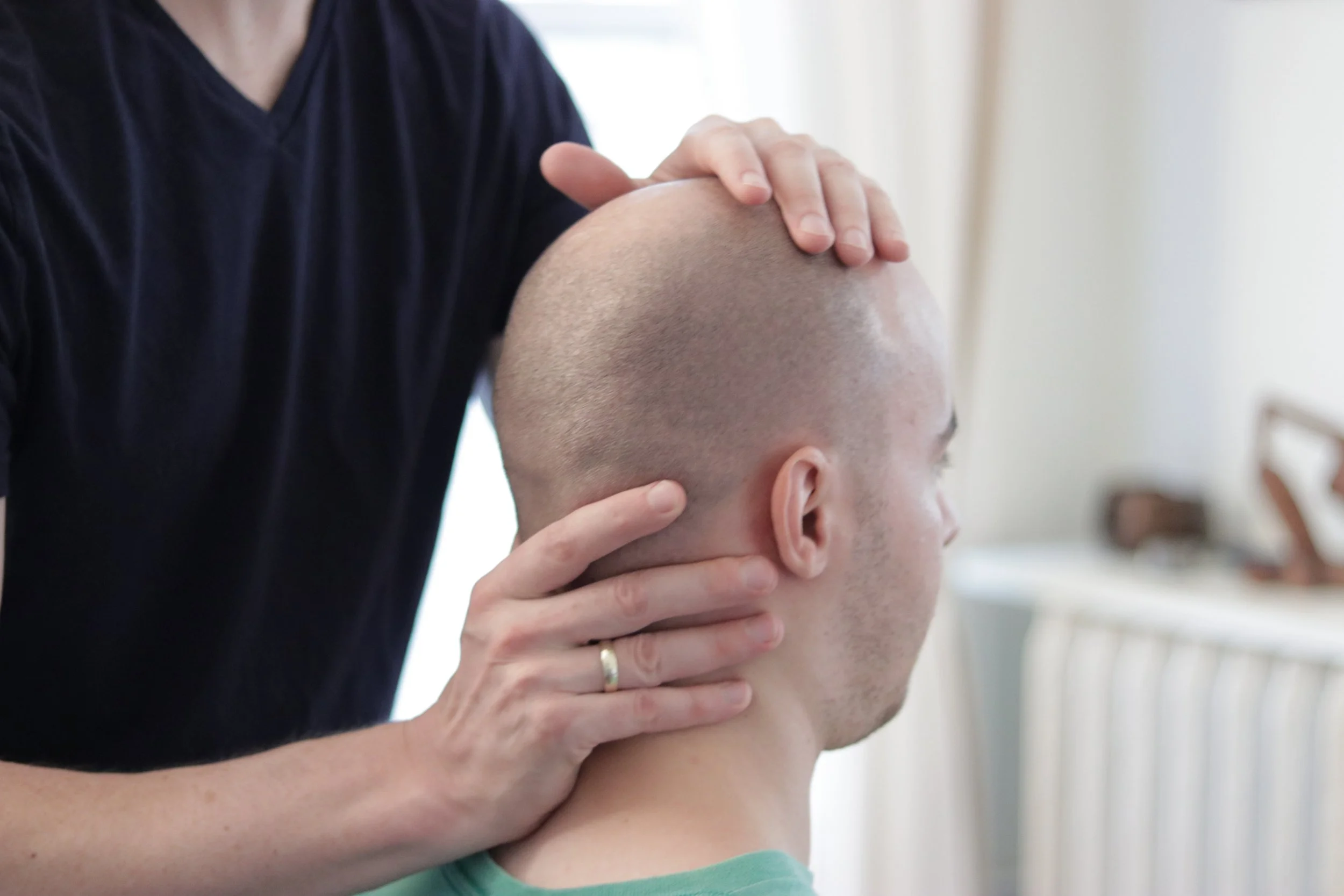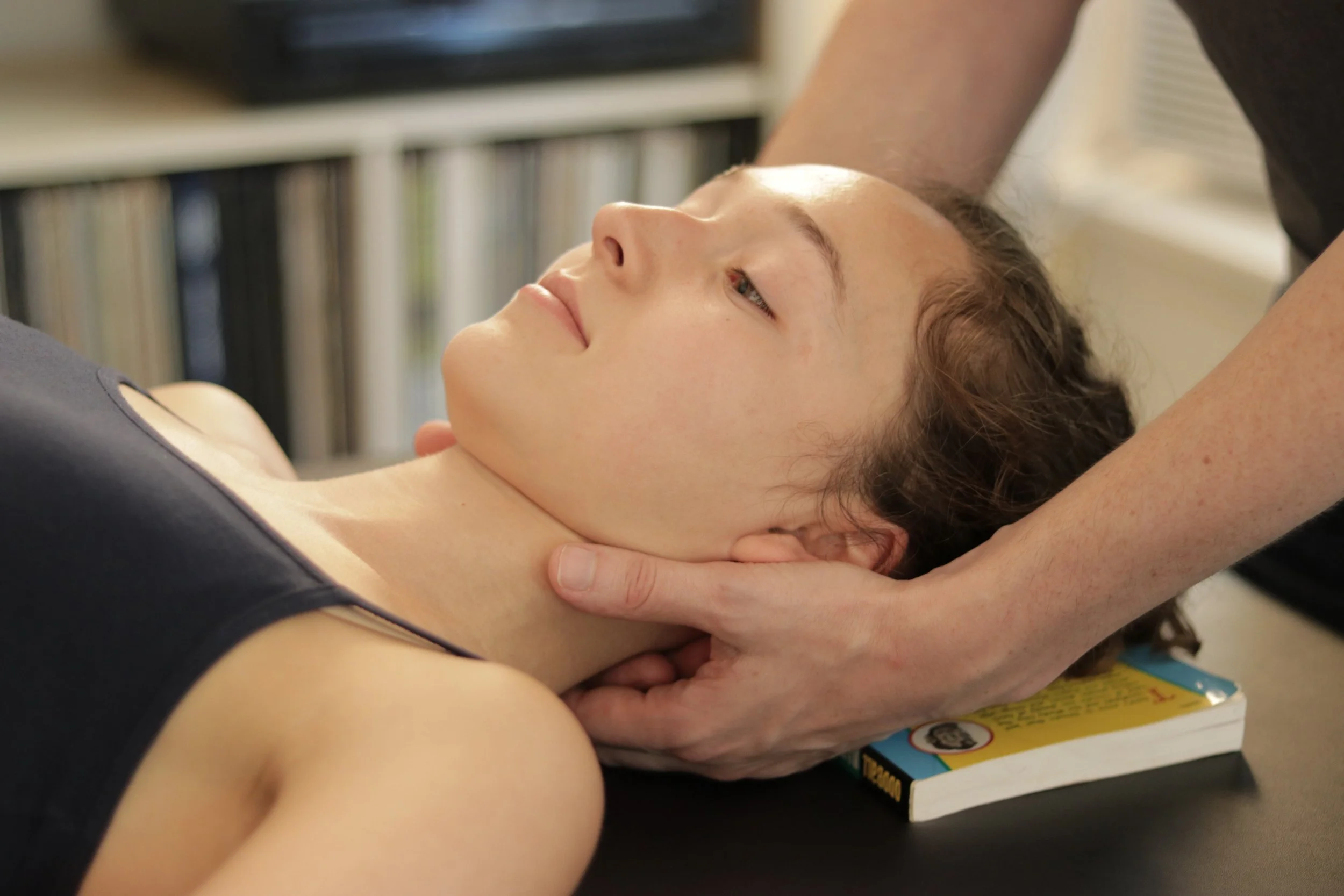About Andrew
Andrew McCann has taught the Alexander Technique for more than twenty-years. He works with students of all backgrounds, from performers to office workers to medical professionals, but has specialized in helping musicians play more comfortably and avoid or recover from injuries. He has taught the Alexander Technique privately and given workshops across the country, including the Taconic Music Festival, Apple Hill Chamber Music festival, Music in the Mountains Conservatory, Music Institute of Chicago, Chicago College of Performing Arts, DePaul University, Wheaton College, the University of Wisconsin-Milwaukee, and Kendall Betts Horn Camp.
Andrew first studied the Alexander Technique with Carol McCullough, whose work made connections between the Alexander Technique and Paul Rolland’s The Teaching of Action in String Playing. He completed his training as an Alexander Technique teacher with Joan & Alex Murray at the Urbana Center for the Alexander Technique.
As a violinist, Andrew was a co-founder and principal second violinist of New Millenium Orchestra of Chicago and resident string quartet, a member of the festival orchestra at the Cabrillo Festival of Contemporary Music, and appeared as a guest artist with eighth blackbird, ensemble dal niente, International Contemporary Ensemble, Spektral Quartet and performed at the 2009 Ojai Festival. He has performed in theater productions with Broadway in Chicago, Chicago Shakespeare Theatre, Writer’s Theater, and the Marriott Theater, Lincolnshire, among others.
Andrew holds a Bachelors of Music in Violin Performance and Bachelors of Arts in History from Oberlin College & Conservatory, as well as a Masters of Music from the University of Illinois at Urbana-Champaign. His principal teachers include Jorja Fleezanis, Sherban Lupu, Gregory Fulkerson, and Lee Snyder.
Andrew moved to the East Coast during the Covid-19 pandemic and now lives in the Berkshires with his wife, their six-year-old daughter, and their geriatric cat, Arlo.
About the Alexander Technique
Students study the Alexander Technique for three main reasons:
Pain management and recovery from injury—most commonly back pain, neck pain, and repetitive strain injuries
Improved skill and ease in everyday activities and skilled performance
Self-knowledge and understanding
How does the Alexander Technique work?
Unconscious habits of posture and movement can cause or exacerbate a wide-range of problems, from tension and discomfort to chronic pain, as well as making learning new skills more difficult.
The Alexander Technique works by improving the adaptability of posture, which has a wide-range of downstream benefits, from increased ease in the body, reduced discomfort and pain, and improvements in both everyday activities of daily life and skilled activities, whether singing or playing a musical instrument, public speaking, athletics, martial arts, among others.
Challenges in learning the Alexander Technique
The Alexander Technique is a pleasure to experience and to learn. The principal challenges of learning the Alexander Technique concern the persistence of our postural habits.
Our postural habits develop gradually and unconsciously over time and can be difficult to perceive, even when these habits are impacting our health or performance. Postural habits are in the background of activities, and in the normal course of the day, these activities remain the focus of our attention, not our posture. While it is relatively easy to temporarily pose our body in any number of positions, lasting and authentic changes to our posture can be difficult to access consciously and voluntarily.
The most common advice about posture—for example, to “sit up straight” or “strengthen the core”—often convinces people that posture is either a relatively simple matter that can be corrected in an instant, or requires significant strength training and effort. Instead, we need to address these specific challenges: directly perceive subtle and persistent postural habits, experience how our daily activities may trigger these habits, and develop strategies to constructively change our habits and avoiding the temptation to pose in what we hope is the “correct position.”
How Lessons Work
Alexander Technique lessons are one-on-one and focus on helping each individual become aware of their habitual posture and how they impact their activities.
Lessons are hands-on and touch is educational, improving the students awareness of their body and encouraging subtle changes in postural organization. Lessons improve the adaptability of posture, meaning that the body is able to be stable without stiffness and yielding without collapsing. This subtle interplay of posture and movement is explored to guided everyday activities, such as standing, squatting, and sitting and standing. Importantly, lessons often include time to apply to challenging individual activities, which often “trigger” our postural habits, making them more difficult to change (for example, holding and playing a musical instrument or sitting and working at a computer.)
Alexander lessons aim to empower students to learn enough to overcome their challenges through their own intelligent inquiry and growing skill. Ultimately, the Alexander Technique teaches self-care through self-knowledge.
History
The Alexander Technique is over one-hundred years-old and is named after F.M. Alexander (1869–1955). F.M. Alexander developed the method over the course of several decades, induced by his struggles with losing his voice as a young actor. The Technique was influence by a number of turn-of-the-century physical culture, dramatic, and mind-body methods, most importantly elocutionary vocal and breath methods and the Delsarte System of Dramatic Expression. An Australian, Alexander moved from Sydney to London in 1904, with stints in the United States during the two world wars. He began training teachers in London in the 1930s. The Alexander Technique is best known in the performing arts, where it is taught at leading institutions around the world, including the Royal College of Music in London and the Juilliard School, among many others. Scientific research is relatively recent, with studies demonstrating that the Alexander Technique is clinically effective at reducing back and neck pain, improving the symptoms of Parknison’s Disease, and improving qualities in everyday and skilled movement.
“The Alexander Technique is brilliant! After having shoulder, neck, and upper body pain for years, my pain was gone in weeks. Lessons with Andrew really gave me a lot of insight and perspective in how I use my back.”
— Sharon Yeary


